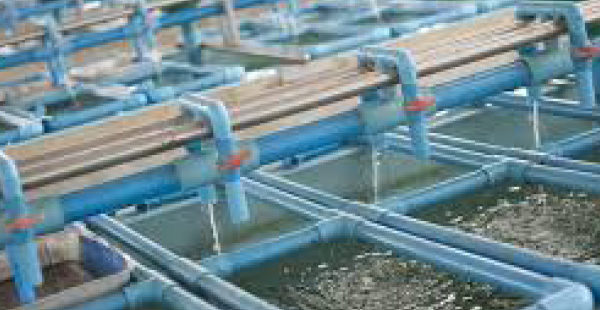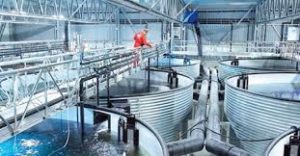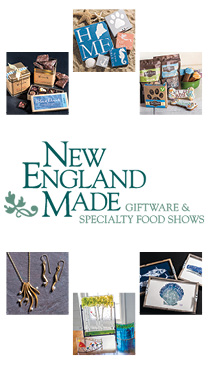
So You Want To Be A Fish Farmer:
How Maine Is Becoming A Magnet For Land-Based Fish Farms
The wild harvest of fish is declining. But seafood demand is off the charts. It’s not hard to see why aquaculture is the fastest growing segment of food production globally, and now supplies over 50% of the global demand for seafood.
Right here at home, the emerging aquaculture industry has a lot of opportunity and growth potential. The consumer definitely wants more quality, fresh fish close to market. Practiced correctly, aquaculture can be a healthy and sustainable food resource. It can also become a keystone industry that provides long term good-paying jobs, that by their very nature cannot be outsourced. And of course Maine has a long and proud heritage for providing quality seafood to the world.
As a segment within the aquaculture business, land-based fish production is a rapidly emerging method for sustainable production of many types of fish. This indoor raised product is differentiated from farmed fish raised in outdoor or ocean-based pens. The fish are raised from egg strands and as they grow, progress to large indoor tanks that resemble what you’ve seen in an aquarium. This means fish that are raised in a controlled environment, much less accessible to environmental contaminants. And if a producer says it is a perch or a bluegill, you can be sure it is that type of fish.
 However, it’s not easy to create and grow a new industry, which is not without its challenges. Siting a large operation can draw objections. Some object to the water usage. But with an enforced regulatory system, we can take on those challenges. In aquaculture, as they say, you take care of the water, the fish will take care of themselves.
However, it’s not easy to create and grow a new industry, which is not without its challenges. Siting a large operation can draw objections. Some object to the water usage. But with an enforced regulatory system, we can take on those challenges. In aquaculture, as they say, you take care of the water, the fish will take care of themselves.
There is also some negative perception in the marketplace associated with farm raised fish. For this reason, it is important for the land-based aquaculture industry to position itself as a premium, indoor-raised, controlled environment clean water product. Producers should work to educate the customer and the buyer so they can see the care that goes into the product, and think of their own children eating that product when they sit down for dinner at home.
Water is not the only resource required, either. Continued investments in Maine’s electrical infrastructure will be needed. To grow a million fish, it does take some horsepower. The tanks and treatment systems have large recirculating pumps. This can include well-planned and sited renewable energy projects that can help reduce long term electrical costs. Technology plays a large part in the sustainability of this industry going forward as energy efficiency continues to improve and water usage continues to drop.
 Part of the sustainability story of indoor aquaculture is the protein conversion ratio, which can be dramatically better than other types of farming. Indoor raised fish can achieve a remarkable 0.8 to 1 feed conversion ratio. To give you an idea, food conversion ratios for confined cattle operations (as opposed to grass fed, which is much better) can be as high as 4.5 to 1. Poultry is in the range of 1.2 to 1.6 to one and pork about 1.6 to 1. With a growing world population, it’s not hard to see why delivering high-quality seafood with low environmental impact is a significant opportunity for an industry that is really in its infancy.
Part of the sustainability story of indoor aquaculture is the protein conversion ratio, which can be dramatically better than other types of farming. Indoor raised fish can achieve a remarkable 0.8 to 1 feed conversion ratio. To give you an idea, food conversion ratios for confined cattle operations (as opposed to grass fed, which is much better) can be as high as 4.5 to 1. Poultry is in the range of 1.2 to 1.6 to one and pork about 1.6 to 1. With a growing world population, it’s not hard to see why delivering high-quality seafood with low environmental impact is a significant opportunity for an industry that is really in its infancy.
As we create more success stories, the financing and capital investment will follow. And like any farm, you can feel good about the food that comes out of a well-run operation. Here’s to continued success and growth of Maine’s responsible aquaculture industry.

Marty Grohman is the Executive Director of the Environmental & Energy Technology Council of Maine, better known as E2Tech. If you’d like to learn more about land-based aquaculture, join them for a forum on June 27th. Learn more at e2tech.org.







